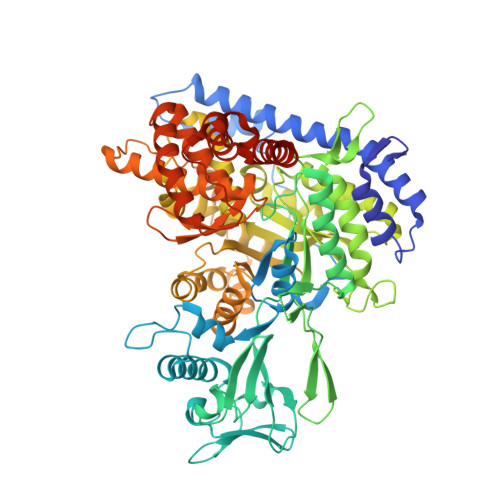Biochemical and structural studies of malate synthase from Mycobacterium tuberculosis
Smith, C.V., Huang, C.C., Miczak, A., Russell, D.G., Sacchettini, J.C., Honer Zu Bentrup, K.(2003) J Biological Chem 278: 1735-1743
- PubMed: 12393860
- DOI: https://doi.org/10.1074/jbc.M209248200
- Primary Citation of Related Structures:
1N8I, 1N8W - PubMed Abstract:
Establishment or maintenance of a persistent infection by Mycobacterium tuberculosis requires the glyoxylate pathway. This is a bypass of the tricarboxylic acid cycle in which isocitrate lyase and malate synthase (GlcB) catalyze the net incorporation of carbon during growth of microorganisms on acetate or fatty acids as the primary carbon source. The glcB gene from M. tuberculosis, which encodes malate synthase, was cloned, and GlcB was expressed in Escherichia coli. The influence of media conditions on expression in M. tuberculosis indicated that this enzyme is regulated differentially to isocitrate lyase. Purified GlcB had K(m) values of 57 and 30 microm for its substrates glyoxylate and acetyl coenzyme A, respectively, and was inhibited by bromopyruvate, oxalate, and phosphoenolpyruvate. The GlcB structure was solved to 2.1-A resolution in the presence of glyoxylate and magnesium. We also report the structure of GlcB in complex with the products of the reaction, coenzyme A and malate, solved to 2.7-A resolution. Coenzyme A binds in a bent conformation, and the details of its interactions are described, together with implications on the enzyme mechanism.
Organizational Affiliation:
Department of Biochemistry and Biophysics, Texas A & M University, College Station, Texas 77843-2128, USA.
























